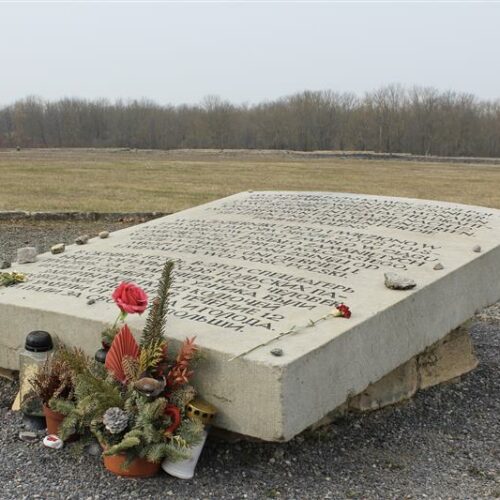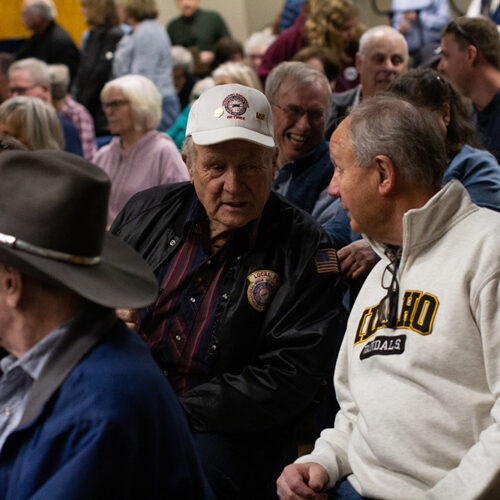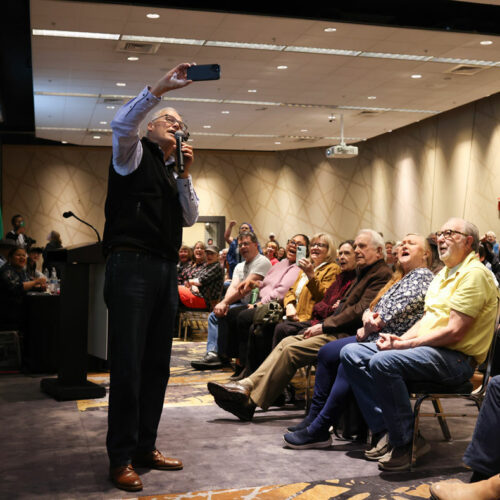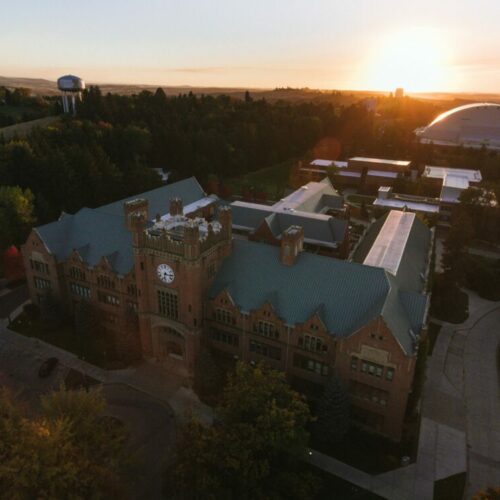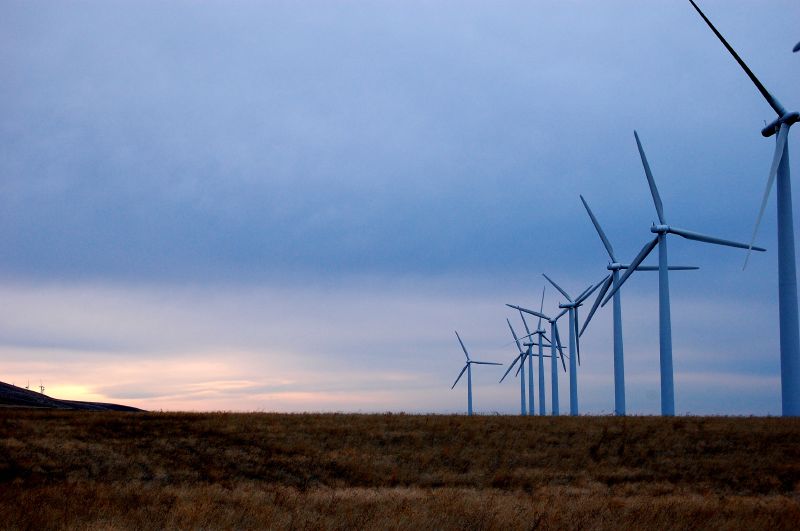
Council approves less restrictive limits for Tri-Cities wind farm
Listen
(Runtime 1:01)
Read
What could be the largest wind farm in Washington received the go-ahead Friday from a state council.
The state’s Energy Facility Site Evaluation Council, also known as EFSEC, voted 4-3 to approve the Horse Heaven Hills Clean Energy Center. The council recommended less restrictive limits on turbines and solar arrays for the project, which would be built near the Tri-Cities.
Those recommendations now head to Gov. Jay Inslee’s desk. Inslee has the final say on plans for the project.
EFSEC evaluates projects for their ability to provide abundant, clean energy and for their impacts to the environment and public priorities, said Kathleen Drew, EFSEC chair.
“We can all look at the information and have a slightly different answer,” Drew said at the end of the Friday meeting.
The energy project farm has drawn criticism from tribes; locals, who worry about views; and wildlife advocates, who worry about disrupted habitats. People also have raised safety concerns, noting that fire crews aren’t allowed to fly over these types of projects.
The council initially recommended mitigation measures that would have slashed the number of turbines nearly in half and reduced the placement of solar arrays. However, Inslee sent the council back to the drawing board.
With this vote, the recommendations might take out 36 turbines, a ballpark number from EFSEC staff. Some of those turbines could be built in different areas of the project. Earlier recommendations from the council could have eliminated more than 100 of the proposed turbines.
Council member Stacey Brewster said while the new recommendations put the protections in flux, the mitigation measures could be adapted.
“I think it allows for sufficient protections and an opportunity to study it further,” Brewster said after the vote.
Inslee wanted the project to generate as much carbon-free energy as possible. He asked the council to tailor more narrowly how it planned to protect wildlife, cultural resources, and views.
“We must come to grips with the fact that we will need to adapt and accept relatively moderate changes to our physical landscape in order to ensure continued, reliable electricity service,” Inslee wrote in a May letter to EFSEC.
Scout Clean Energy, the project developers, initially proposed between 141 to 244 wind turbines, depending on the height of the turbines the company builds. That project would stretch along 24 miles of blustery ridgelines. The company also proposed three locations for solar arrays and battery storage.
In a 5-2 vote in April, EFSEC suggested limiting where turbines could be built within the project site. Those suggestions would have nearly slashed the number of turbines in half. It also would have reduced the acres where solar arrays could have been built.
At the time, developers said those cuts would make the project “non-viable.”
Michael Rucker, president and CEO of Scout Clean Energy, sent a letter to the EFSEC that noted recommendations could curtail yet-to-be proposed projects.
“If applied to future projects, (these standards) would restrict renewable energy siting on nearly a fifth of the state’s Columbia Plateau Ecoregion,” Rucker wrote.
Now, with this newest set of mitigation measures, there will be a smaller buffer for endangered ferruginous hawks. A group of experts will survey the area for active hawk nests before construction begins, which could put further restrictions on turbines. Turbines also will be restricted within a mile of Webber Canyon to avoid some cultural concerns raised by the Yakama Nation.
For both votes, council member Lenny Young didn’t want the project to move forward. Young voiced concerns about Yakama Nation traditional cultural properties, also known as TCPs.
“A substantial number of turbines would come back into play. So my concerns around Yakama Nation TCPs have only been heightened,” Young said.
According to the Yakama Nation, the project would cause “irrevocable damage” to treaty-reserved resources and sacred areas, including ceremonial, burial, legendary, and monumental sites.
“It has been painful to watch the governor’s callous dismissal of those impacts,” Gerald Lewis, the Yakama Nation chairman, wrote in an Aug. 23 letter to the council. “This sacred landscape will be forever changed.”
According to the letter, Lewis urged the council to find other ways to respond to climate change in a “responsible manner.”
“That doesn’t turn a blind eye to the impacts of new industrial-scale development projects in the name of ‘green energy,’” Lewis wrote.
Members of a local group opposed to the clean energy project wrote in comments that the council should not approve less restrictive recommendations.
“All this for a massive, poorly sited project that will produce limited, unreliable energy and with no assurance it will help Washington state meet its energy goals,” Karen Brun, Paul Krupin, Pam Minelli and Dave Sharp, members of Tri-Cities C.A.R.E.S., wrote to the council.


